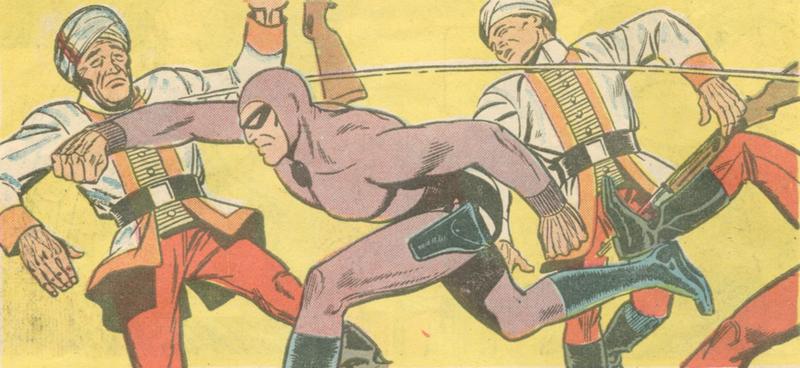The Phantom: The World's First Superhero Premiered In 1936
By | February 13, 2021

The Phantom is a rarity among superheroes. As one of the first costumed superheroes, he paved the way for characters like Spider-Man and Batman while creator Lee Falk showed independent writers and illustrators the importance of holding onto their creations. Phantom fever may not grip audiences in the same way as characters from the Marvel and D.C. universes, but this hero who's a little bit Tarzan and a little bit Sherlock Holmes will always have a place in the hearts of true superhero fans.
The Phantom: Origins
Before the Phantom made his way through the mysterious jungles of Bangalla, Lee Falk was just a student at the University of Illinois, where he submitted stories and poems to the college paper before pitching his first comic strip, Mandrake The Magician, to King Features Syndicate. The young writer and illustrator waited all day to meet with the company's general manager, Joe Connolly, who promptly forgot about the meeting and left the young man in his waiting room. Upon realizing his mistake, he took Falk out for dinner, a show, and drinks, and at that point, he couldn't very well reject him.
Mandrake The Magician premiered on June 11, 1934, and fortunately, it was good. In fact, it ran for the next 80 years under various writers and illustrators. Falk continued writing it until his death in 1999, but he quickly begged off illustration duties in favor of developing his next idea. He poured himself into the concept of The Phantom, structuring the first few months of the comic before presenting it to K.F.S. He got the green light almost immediately, and the comic premiered on February 17, 1936, just before Falk's 25th birthday.

Growing Pains
Initially, the Phantom was going to be a wealthy playboy who fought crime by night, but Falk soon had a change of heart and moved the character to the jungle. Inspired by the work of Rupyard Kipling, he gave the Phantom a wolf companion named Devil, a horse, a group of pygmies that worked alongside him, and his own hideout, the Skull Cave. If Falk had stuck with his original conception, Batman and Superman would be even more indebted to the Phantom.
Falk was influenced the adventure stories of his youth and wanted the Phantom to be the same sort of hero, but it took him some time to figure out exactly how to use the purple-suited protagonist to tell his pirate and detective stories. Less than a decade after the Phantom's first Sunday strip, America entered World War II, and the stories in the comic turned more toward themes of espionage. At the time, Falk was serving as the chief of a foreign language radio division of the Office of War Information, which understandably influenced his work.

The Phantom Legacy
Whether it was parallel thinking or Falk kicked down the doors of the industry, the Phantom set the stage for the superheroes of the '30s, first Superman in 1938 and then Batman in 1939. Like the Phantom, these characters wore skintight outfits, and Batman even wears a very similar mask. While Falk's concept of a colorful detective with a secret identity anticipated the rise of the heroes to come, however, The Phantom never managed to become the blockbuster franchise of its successors. Maybe it was the comic's reliance on adventure stories, or maybe readers couldn't connect to its non-American setting.
That doesn't mean the Phantom has just been twiddling his thumbs for the better part of a century. As Falk toiled away on the comic until he passed away on March 13, 1999, dictating his final stories to his wife from his deathbed, it was adapted into multiple series of novels, T.V. series, video games, miniseries, and an infamous 1996 big screen production that was as delightfully campy as it was financially disastrous. But the Phantom could still get the Dark Knight treatment: In 2014, it was announced that celebrated producer Mark Gordon had acquired the film rights to the comic. He may remain a cult character, but it's clear that the Phantom will never truly be a ghost.

